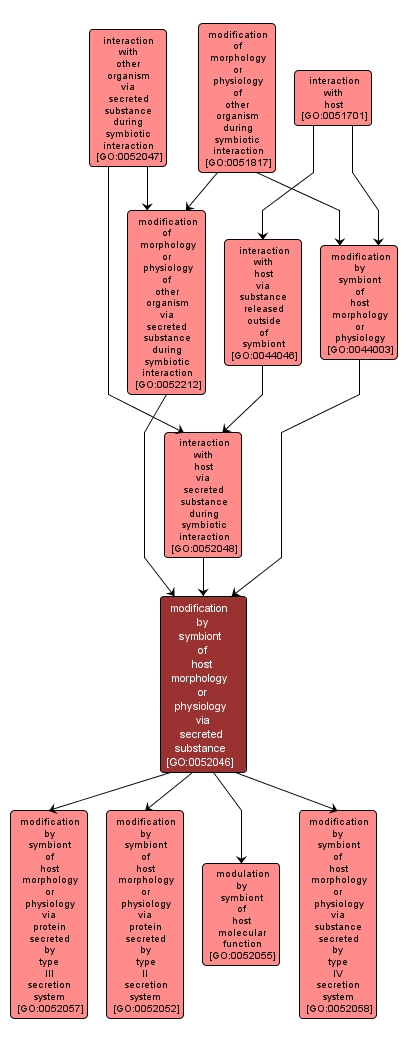GO TERM SUMMARY
|
| Name: |
modification by symbiont of host morphology or physiology via secreted substance |
| Acc: |
GO:0052046 |
| Aspect: |
Biological Process |
| Desc: |
The process by which an organism effects a change in the structure or function of its host organism, mediated by a substance secreted by one of the organisms. The host is defined as the larger of the organisms involved in a symbiotic interaction. |
Synonyms:
- modification of host morphology or physiology via effector molecule
- modification of host morphology or physiology via ellicitor
|
|

|
INTERACTIVE GO GRAPH
|














